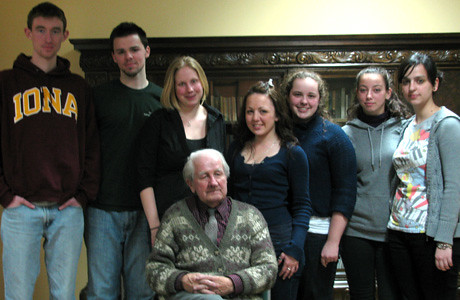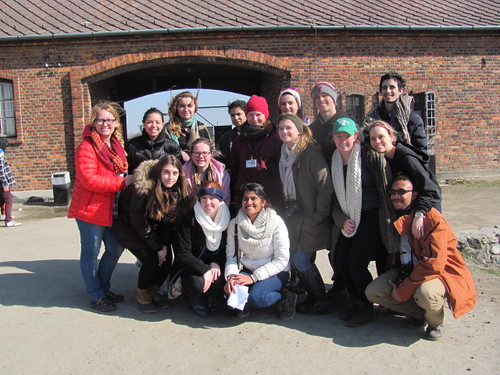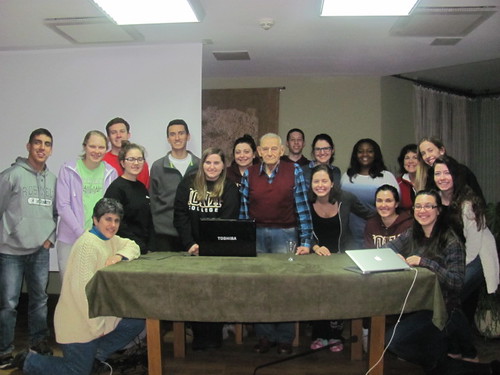Returning home from Poland and attempting to fully explain
my experience was tough. Sharing my new
knowledge about the Soah, Pope John Paul and Krakow wasn’t difficult. Sharing pictures with my loved ones was a bit
of a struggle, merely because I remember exactly how I felt when snapping them. Oddly enough the hardest part for me, was
answering the simple question of “How was Poland?” When someone first asked me this question, I
was dumbfounded. How does one fully explain
one week of their life that was life changing, eye opening, humbling and
incredible in a few sentences?
To be honest, I don’t have an
answer for my own question and still have some trouble answering it today. However,
I found when I set aside time to have a lengthy conversation with a family
member or good friend, I can fully explain my thoughts, feelings and
experience, so talking about Poland becomes easier. I am aware that everyone who asks about my
trip to Poland doesn’t actually want to hear every detail, so I describe my
experience to him or her as educational, unimaginable, bewildering and
mournful.
Flowers left on prisoner’s sleeping area
Even though our trip was only a short period of time, everyday
I find myself being reminded of Poland and/or the Soah. For example, a few weeks ago I was conversing
with a friend about my experience on this trip.
After sharing my pictures and telling him about some of the horrifying events
that occurred, he said “I don’t understand how people could let something like
this happen. Millions of people were
being killed, and no one even tried to stop it.” My heart dropped, but I knew what I had to
tell him. I told him all about righteous
gentiles and how it is so important not to judge other people’s actions,
especially when one doesn’t fully understand another’s circumstances. I also told him that some people wanted to
help the victims, but there were high risks involved, such as death, if they
were caught. I also reminded him that terrible
events occur today around world, but not everyone is sympathy or
proactive.
I think it is important to relate
my interaction to a reading we were assigned to read. It said “More or less eight to 10 million
people go to such exhibitions around the world today, they cry, they ask why
people didn’t react more at the time, why there were so few righteous, then
they go home, see genocide on television and don’t move a finger” (Kimmelman). This was a gentile reminder that it is so
easy to look back at our not so far away past and judge the actions of others.
It is difficult to grasp how a select group of humans
decided they had the right to create this camp and others like it, in order to
carryout a systemic genocide. Its tough to comprehend the horrific events and
my experience can be hard to talk about at times. Regardless, I believe it is vital for
everyone to study this time period and remember all of those affected by the
Soah, because most are gone, but all should be remembered.
WORK CITED
Kimmelman, Michael. "Auschwitz Shifts From
Memorializing to Teaching." The New York Times. The New York Times, 18
Feb. 2011. Web. 30 Apr. 2017.
























